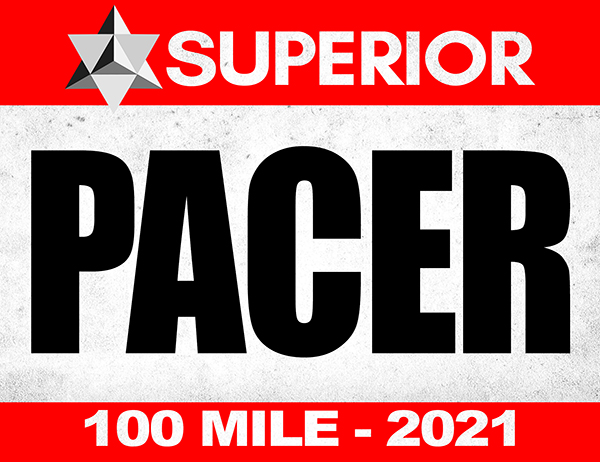You must wear your race number and it must be clearly visible at all times. The Superior “Fall” Trail Races host three races simultaneously, the Superior 100 Mile, the Superior 50 and the Superior / Moose Mountain Marathon. Each distance will have its own unique race number (unique color and number series) so runners can be easily identified by race officials, volunteers, spectators and other runners. We ask that all competitors wear their number on the front of their body on their outer-most layer at all times and do not “fold down” your number. Runners will be tracked coming into and out of each aid station. If we cannot see your number, we cannot track you or take your finishing time and if we cannot do that, you will be disqualified and will not earn an official finish. Additionally, 100 mile runners will be issued a piece of pink and 50 mile runners a piece of blue ribbon to be tied onto the back of your hydration pack, waist belt etc. so you can be easily identified from behind has well.
(Superior and all RSR events): We will no longer be printing your emergency contact info on the front of your bib (the only info in addition to your name will be your shirt size) – we encourage you to write-in your your emergency contact information on the back of your bib (scroll to the end of the page for the bib-back example), We will have Sharpie markers at check-in so you can do this.
We are requiring pacer bibs for 100 mile runner’s pacer(s), you will find two (2) pacer bibs in your race bag – for those that do not have pacers, you can turn those bibs back into us or share with fellow runners who may need an extra.
100 Mile | Color: Red | Number Series 1 – 299
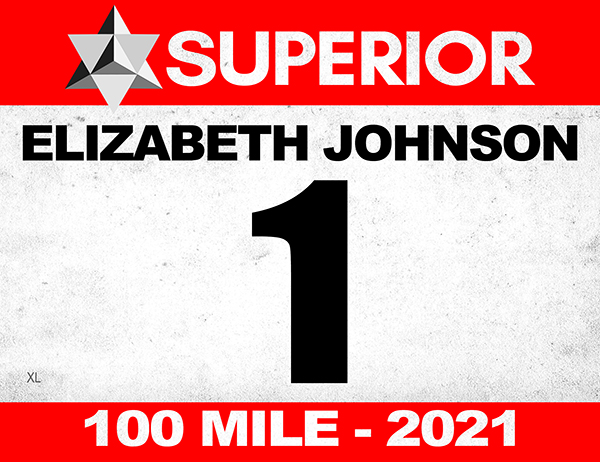
Superior 100 PACER Bibs
50 Mile | Color: Blue | Number Series 850 – 999
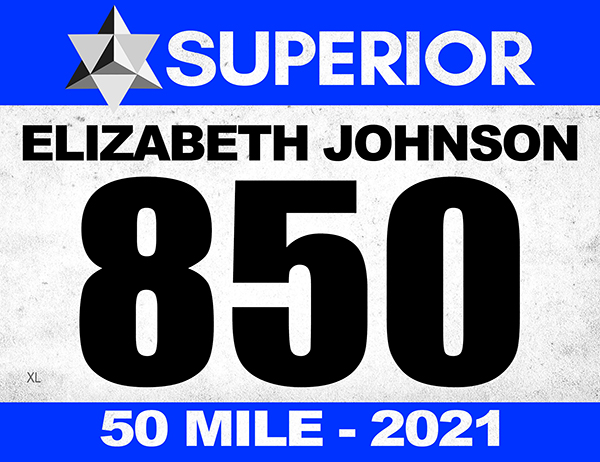
Marathon | Color: Green | Number Series 2600+
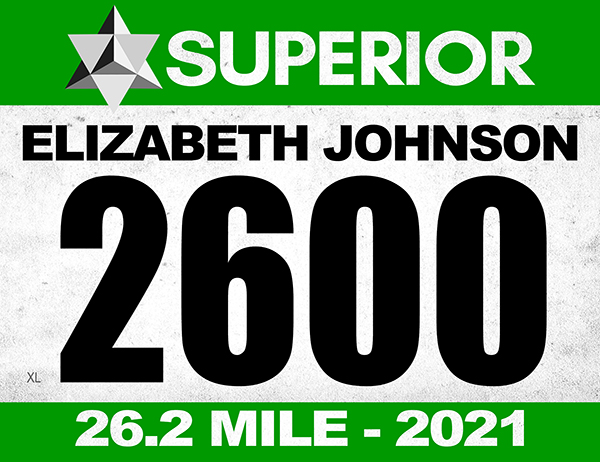
Chip Timing / Back of Bib
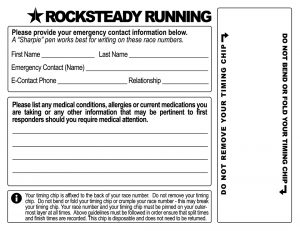
+
The Superior ‘Fall’ Trail Race 100, 50 and 26.2MI will be chip timed. Your timing chip will be affixed to the back of your race number. Do not remove your timing chip. Do not bend or fold your timing chip or crumple your race number – this may break your timing chip. Your race number and your timing chip must be pinned on your outer-most layer at all times. Above guidelines must be followed in order ensure that split times and finish times are recorded. This chip is disposable and does not need to be returned. Below is a rendering of the back of your race number / bib illustrating where your timing chip will be placed.
